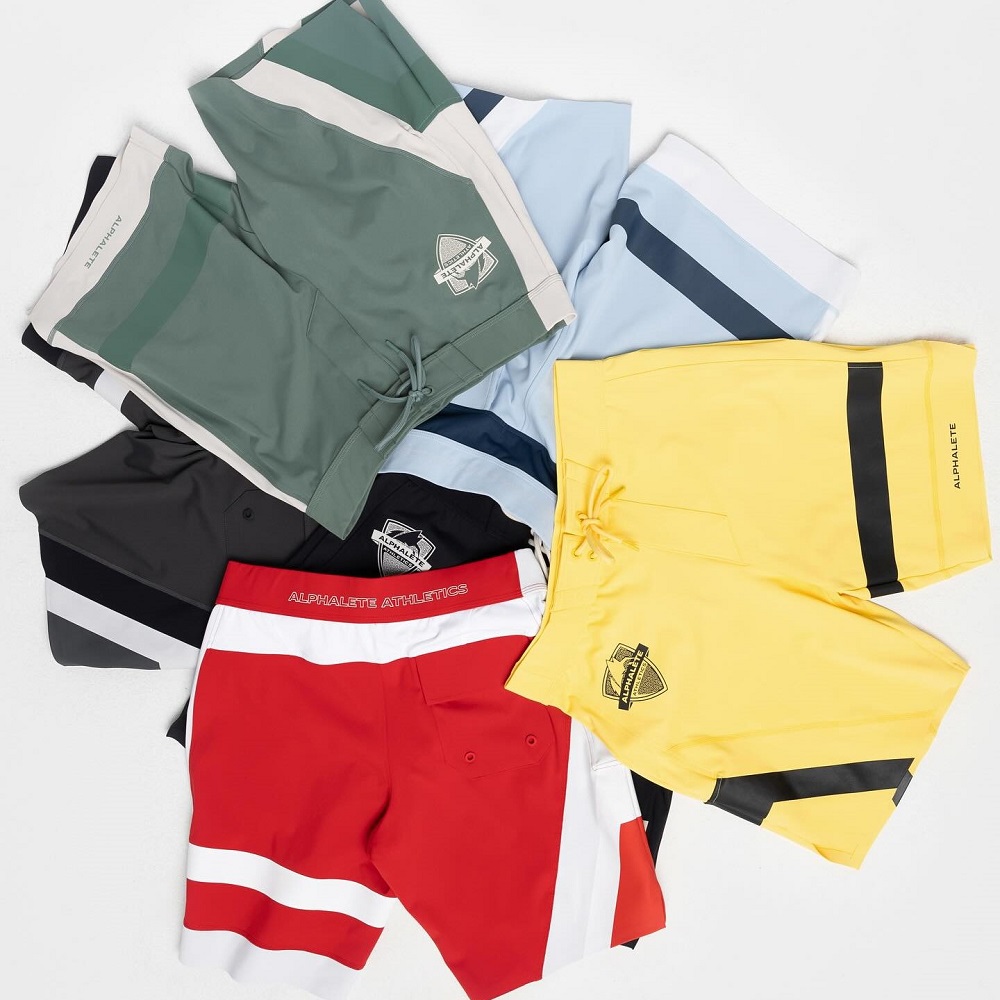How To Put On Compression Socks – Best Guide For 2023
Table of Contents
What Are Compression Socks?
Compression socks are designed to promote increased blood flow from an individual’s legs to their heart. They work by applying gentle pressure to the affected area which increases circulation and helps prevent or minimize venous issues. Due to the critical role compression socks play concerning blood flow, it’s important to follow our step-by-step guide in how to put on compression socks.
How to Put on Compression Socks
Compression socks play a vital role in maintaining blood flow within the lower legs and feet. But none of that matters if they aren’t worn properly. Unlike most items of clothing, when it comes to putting on compression socks, there is a right way and a wrong way.
You can damage compression garments if you aren’t wearing them properly. More importantly, an improper fit compromises the circulation benefits the sock is designed to give. If compression socks are too loose, your legs won’t receive the pressure required to improve circulation. Alternatively, the socks can be too fit, which can cause a cut off in circulation.
Compression socks are designed to be a snug fit, so they can be tricky to put on for beginners. If you follow our guidelines, you’ll see that it’s quite simple. Keep reading for instructions on how to put on compression socks the right way.
- Ensure the compression sock is not inside out
- Get in a seated position: whether in a chair, on the edge of a bed or on the floor, make sure you have enough space to move freely
- Place your arm into the sock until your palm rests inside the sock’s heel
- Using your thumb, pinch the sock heel against your palm
- Using your other hand, pull the sock top back down your arm, turning it inside out as you go without letting go of the sock heel
- Stop pulling the sock when you reach your thumb; this will make it easier to get your foot into position
- Once your foot is in place, begin rolling the sock sleeve up toward your knee (calf length socks will stop below the knee and thigh highs will go over the knee and cover the entire leg
- If your calf length compression sock goes too high, make a crisp fold in the material directly beneath the knee
- Ensure the compression sock is smooth and not wrinkled or bunched
Our version of how to put on compression socks 101 isn’t over just yet. Here are some expert tips to help you get the hang of the process–and to ensure you don’t damage the socks along the way.
- Keep your nails short and remove all jewellery before putting socks on or taking them off
- Some experts recommend wearing rubber gloves to safeguard against snags and tears (they can also help you get a better grip)
- While wearing compression socks, consider wearing slippers, shoes or loose socks over top
- Don’t apply lotion to legs before wearing compression socks
- Do not cut any loose threads that may appear on a compression garment
- Avoid pulling or tugging on socks during wear, which can tear the fabric
The Best Way to Remove Compression Socks
Just as there are guidelines for how to put on compression socks, the same goes for taking them off. Tugging at them can result in damage and compromise to the compression they provide.
When removing your compression sock, follow these instructions:
- Get a firm grip of the fabric at the top of the sock, just below the band
- Fold the sock down over your leg, kind of like peeling a banana
- When you’ve gone as far as you can go, slip the compression sock off over your foot
How Compression Socks Work
There isn’t much of a point to learning how to put on compression socks if you don’t know what they do. It all has to do with our circulatory system. The blood flow in our legs has to fight gravity in order to make its way back up to the heart. If a person is prone to or suffers from circulation issues, this can make it difficult for the blood to travel upward. The resulting pooling of blood in the lower extremities can lead to swelling, achiness, fatigue, blood clots and even more serious health conditions including Deep Vein Thrombosis (DVT).
Wearing a compression sock can change this situation for the better. Calf high compression socks are tightest around the ankles, gradually loosening as they reach the knees and thighs. By compressing surface veins, arteries and muscles, the garment forces the circulating blood through narrow channels. This increases blood flow reaching the heart and reduces pain, discomfort and swelling in the lower legs and feet.
Types of Compression Socks
If you’re thinking of getting compression socks, you should know the three types available on the market: Graduated compression socks, Anti-embolism socks, Non-medical support hosiery
Graduated Compression Sock
The graduated compression sock typically requires a professional fitting and is sometimes only available by prescription. The level of compression offered by this garment is strongest at the ankle and gradually decreases toward the top. This particular sock is designed to promote mobility yet can sometimes prove challenging to put on. This is where our clearly defined instructions for how to put on compression socks comes in handy.
Anti-Embolism Sock
The anti-embolism sock is generally used to reduce the risk of DVT and other vein issues. While the compression works in much the same way as the graduated sock, the levels can differ based on preference and necessity. The anti-embolism sock is often used by individuals who are on their feet or sitting for extended periods of time.
Non-Medical Support Hosiery
These particular compression garments do not require a prescription and can usually be found at most pharmacies. Hosiery comes in the form of compression stockings or pantyhose, meant to provide relief for tired and achy legs.
Benefits of Wearing Compression Socks
The advantages of wearing compression socks are numerous, from simply giving your legs a bit of a circulation boost to preventing or minimizing potentially life-threatening conditions. Make a wrong turn when putting your socks on and you can basically kiss the benefits goodbye.
These are the top benefits associated with wearing compression socks:
- Increases circulation within the legs
- Prevents/decreases leg, ankle and foot swelling
- Vein support
- Reduces pain and discomfort caused by varicose veins
- Decreases the risk of developing DVT, a life threatening condition associated with blood clots
- Provides legs with a refreshing and energized boost
When You Should Wear Compression Socks
Basically anyone can wear compression garments at any time for comfort and relief. For individuals suffering from potentially serious issues, a health care professional may prescribe or recommend specific compression items to be worn.
Whatever the case, compression socks have gotten a bad rap over the years. Many people believe they are reserved for the elderly and infirm but that’s just not true. They’ve come a long way – these days you can find them in any bright color or pattern imaginable.
These are the most common reasons for wearing compression socks:
- On bed rest
- During a long flight
- Sitting for extended periods of time due to work or travel
- Continuous standing
- Suffering from or having a family history of certain health conditions such as DVT and/or varicose veins
- Exercising: it is believed that compression socks can decrease muscle soreness while exercising or during post-exercise recovery
- For relief after suffering a muscle injury
If you are uncertain, feel free to discuss with your health care provider to find out if wearing compression garments can be beneficial to you. Keep in mind, compression socks won’t matter in any of the above scenarios if they aren’t worn properly, so refer to our guidelines for how to put on compression socks.
Choosing the Right Compression Socks
Level of Compression
Before buying compression socks, it’s good to know that they come in a variety of pressures. Each compression gradient is specifically designed for a purpose. Figuring out which compression level is right for you is the first step in determining which sock to purchase.
| Compression Level | Pressure Amount | Uses |
| Mild | 8-15 mmhg | Used to relieve mild swelling in feet, ankles, legsPrevents fatigue during extended periods of sitting/standingReduces achiness and fatigue from day-to-day lifeCan help reduce/prevent formation of varicose/spider veins in pregnant women |
| Medium | 15-20 mmhg | Most common level of compressionRelieves tired and achy legsPrevents and reduces swellingCan help prevent DVT and other serious health conditionsIdeal for use while travelling or in jobs requiring extensive time on your feet |
| Firm | 20-30 mmhg | Offers same support as levels aboveUsed to treat serious venous issues such as swelling, ulcers and recovery from DVT and other inflammatory conditionsSeek medical advice before wearing this level of compression |
| Extra Firm | 30-40 mmhg | Treats and prevents serious issuesShould only be worn when instructed to do so by a healthcare professional |
| Highest | 40-50 mmhg | Treats serious venous diseasesShould only be worn when prescribed by a healthcare professional |
Compression Sock Sizes
Next, you need to select the size compression sock that will fit you best. Sizing is typically based on shoe size as well as calf measurements. Consult the chart below as a guideline when deciding what size compression sock is right for you.
| Compression Sock Size | Women’s Shoe Size | Men’s Shoe Size | Calf-Size |
| XS | 5-8 | 5-7 | 10”-13” |
| S/M | 8-10 | 8-10 | 13”-16” |
| L/XL | 11-14 | 11-13 | 16”-20” |
How to Measure For Knee High Compression Socks
Before choosing a knee high compression sock, an accurate calf measurement is the best way to ensure a good fit. A calf-measurement can be done by a certified fitter, but you can easily undertake this task yourself with a tape measure.
The most optimal time to measure is first thing in the morning, as legs tend to swell during the course of a day.
- Always start with your ankle measurement: place the tape measure above the ankle bone at the most narrow part of the ankle and measure the circumference
- Next is your calf measurement: place the tape measure around the widest part of the calf and measure the circumference
- Calf length measurement: sit on a chair with legs at a 90-degree angle; using the tape measure, note the distance from the bend in your knee to the floor
How to Measure for Thigh High Compression Socks
In order to measure for thigh high compression socks, you’ll need to arm yourself with a tape measure once again. Here are the steps to follow:
- Start with your ankle measurement, the first measurement you should always make
- Next, measure your calf
- Check your thigh measurement: wrap the tape measure around the widest part of the thigh, directly beneath the buttocks, and measure the circumference
- Leg length measurement: using the tape measure, confirm the distance from the bottom of your buttocks to the floor
Washing and Caring For Compression Socks
In order to reduce the amount of wear and tear on your compression socks, proper care is essential. Experts recommend that compression socks be washed after each use. Washing restores the elasticity of the garment and ensures the wearer receives the proper amount of pressure for each wear. Washing also removes the inevitable build-up of sweat and oil which can cause damage to the compression sock over time.
Compression socks should always be hand-washed. Hot water should be avoided at all costs—otherwise, the integrity of the compression may be compromised. Follow these instructions and you’ll be good to go:
- Fill a small basin or tub with cool water
- Dip compression socks into the water to saturate and then remove
- Add mild detergent to the water and mix with your hand
- Place socks in the soapy water and allow to soak for 5 to 10 minutes
- Gently rub the socks to remove dirt and oil
- Squeeze out excess soap and rinse under cool running water
- Continue squeezing under running water until no soap is visible
- Remove from running water and continue to gently squeeze out as much excess water as possible
- Lay flat or hang to dry
When squeezing out excess water, do not pull or wring the compression socks. This can lead to them becoming damaged and misshapen. Either way, they won’t accurately perform the job they were designed to do.
It is also recommended that compression socks be replaced every 3 months. Even if they look new, chances are the elasticity has decreased and they no longer provide the intended level of compression. Carefully following the instructions on how to put on compression socks and their removal will also help keep them long-lasting and effective.
By now you know how to put on compression socks and just some of the huge array of benefits they provide. For more on compression socks, check out our in-depth guide.








